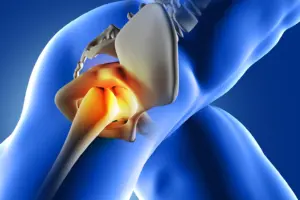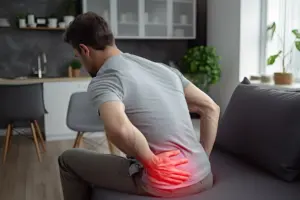
Differences between chronic and back pain: Back pain is one of the most common health problems worldwide; almost everyone experiences it at some point. Occasionally, the pain comes on suddenly and fades within days, while other times it lingers and becomes part of daily life. That’s where two important terms come in: acute back pain and chronic back pain.
What is acute back pain?
Acute back pain usually appears suddenly, often after a specific event such as lifting something heavy, bending awkwardly, or sustaining an injury. The pain may feel sharp, stabbing, or throbbing, but it doesn’t last long, generally less than four to six weeks. Common causes include accidents, falls, poor posture, and overuse. Most cases improve with rest, gentle movement, or over-the-counter medication.
Also Read | Hip pain or lower back pain? How to tell what’s really hurting you
What is chronic back pain?
Chronic back pain, on the other hand, persists for more than three months and can continue even after the original injury has healed. It can affect sleep, limit daily activities, and lower overall quality of life. Chronic pain is often linked to long-term conditions such as arthritis or old injuries, and treatment usually involves a combination of medication, physical therapy, lifestyle adjustments, and sometimes mental health support.
Why is it important to understand the differences?
Knowing the type of back pain you have can help you choose the right treatment. Acute pain might need short-term care and rest, while chronic pain might require a long-term treatment plan.
How to treat acute back pain?
If you’re dealing with acute back pain, it’s best to take it gently for a day or two but stay lightly active. Applying ice during the first 48 hours helps reduce swelling, and after that, a warm compress can relax tight muscles. Once the pain begins to ease, gentle stretching or short walks can support recovery and speed up healing.

How to treat chronic back pain?
Chronic pain often needs a more comprehensive approach. A physical therapist can guide you through exercises that build strength, improve posture, and reduce stiffness. Because long-lasting pain can take a toll on mental health, practices such as yoga, meditation, or counselling may also help. Physicians may recommend muscle relaxants, anti-inflammatory drugs, or other therapies, depending on the underlying cause.
Also Read | How Yoga can help relieve back pain: 4 poses to practice
Back pain is something many people experience, but knowing whether it’s acute or chronic makes a big difference in how it should be managed. The good news? Most back pain can be managed, and you don’t have to live in discomfort forever.








